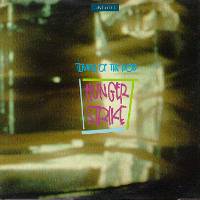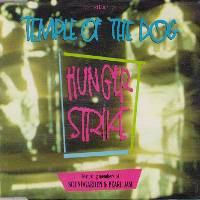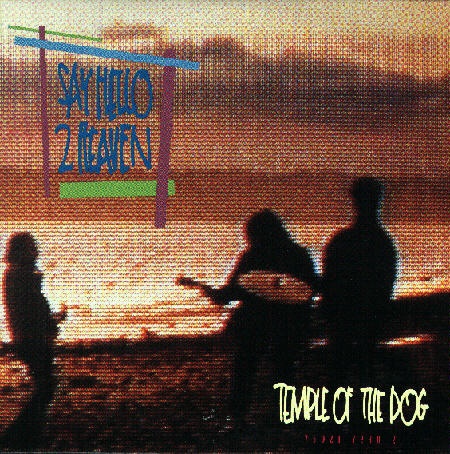
- Hunger Strike (4:03)
Música y letra: Chris Cornell




Mother Love Bone ganó visibilidad en 1992 cuando la canción “Chloe Dancer/Crown of Thorns” se incluyó en la banda sonora de la película Singles. El proyecto The Malfunkshun nunca vio la luz, hasta que Stone Gossard y la discográfica Loosegroove Records de Regan Hagar publicaron el álbum “Welcome To Olympus” hace unos años. El EP The Shine y Apple están descatalogados y se han convertido en objetos de coleccionista altamente demandados (y bastante caros); sin embargo, hay una recopliación de estos proyectos titulada, simplemente, Mother Love Bone que sigue disponible.
Bruce Fairweather se marchó y unió a varios proyectos de Seattle, el más conocidos de los cuales es Love Battery; Greg Gilmore ha participado también en algunos proyectos menos conocidos.
En junio de 1997, un director llamado Scott Barbour estuvo en Seattle, entrevistando a Chris Cornell y Stone Gossard para un próximo documental sobre Andy Wood. El OK Hotel, sala donde tuvo lugar el primer concierto de Mother Love Bone, albergó una noche de música filmada para el documental; entre los grupos que aparecieron estaban Macaw, un nuevo proyecto de Ben Shepherd, ex-Soundgarden, y Devilhead, en el que participan Brian y Kevin Wood, hermanos de Andy.
Música, conexiones, amor y amistad que fueron siempre la base fundamental de Mother Love Bone y Temple Of The Dog continúa.
[Volver a History of Temple of the Dog – Índice.]
Then, in the spring of 1991, Soundgarden entered the studio to begin recording what would become the legendary Badmotorfinger. Pearl Jam were in the studio around the same time, recording their debut album, Ten (equally legendary, of course). The albums were released, the respective bands exploded, and suddenly the media and the fans were desperately hungry for more (pardon the pun). A&M saw the opportunity and struck while the iron was hot, rereleasing and actively promoting Temple Of The Dog to an audience who didn’t and couldn’t possibly understand the project’s spirit and origins. New fans couldn’t understand why Eddie was relegated to the shadows in the “Hunger Strike” video, or why he didn’t sing on more of the songs. Others were angry at the attention Eddie seemed to be receiving, and didn’t understand that he’d been invited to join the project, not that he forced his way in, or was put there by the manipulations of the record company.
Despite the confusion, there were two more semi-reunions for Temple Of The Dog, one in October 1991, at the Foundations Forum showcase (which Pearl Jam and Soundgarden both attended), and another at the last Lollapalooza show of the ’92 tour. The first was planned, the second one purely organic, as a result of extremely high energy at the end of an amazing tour. Additionally, rumors flew thick and heavy that there would be another reunion at the end of the 1996 Lollapalooza, and apparently the management of both Pearl Jam and Soundgarden are continually inundated with offers and requests for charity appearances and the like. There’s also regular unattributed reports of a second Temple album.
What none of these people understand, and as much as I, or you, or any of us, would kill to see these two bands combine forces again, is the fact that Temple Of The Dog grew out of love, and emotion, and grief, and that it just can’t happen again. None of us can personally understand what Chris, Stone and Jeff went through at the loss of their friend, and it’s wrong for us to ask them to turn it on and off and treat it as a commodity. Instead, what we can and should do is enjoy, appreciate and respect the fact that they chose to share their grief with us in the best way they knew how: making music.
Continue reading: History of Temple of the Dog – Part 5, The aftermath.
Back to History of Temple of the Dog – Index.
His death hit the Seattle music scene hard; very hard. Not only for his bandmates, but for his friends, his coworkers, his housemates, one of which was Soundgarden’s Chris Cornell. Trying to find an outlet for his enormous grief, Chris penned a few songs in tribute to Andy, which were “Reach Down” and “Say Hello 2 Heaven.” He decided to ask Stone and Jeff, Andy’s friends and bandmates, if they’d like to record them, for a possible single release. At the time, Soundgarden had yet to become superstars, and Stone and Jeff were just beginning the painful work of putting a new vehicle together, following the untimely demise of Mother Love Bone. Chris recruited his Soundgarden compatriot Matt Cameron, who coincidentally at that time was working with Gossard, Ament and a new co-conspirator, one Mike McCready.
“It was initially my idea because of a couple of songs I recorded,” Chris [Cornell] explains, “but the idea was mainly to do a single as opposed to a whole record. And the thing was, the rest of the guys in Temple, they sort of thought, well, maybe we should make it a little bit longer project, like an EP or something. The more we talked about it, the more songs kept flying out, and it ended up being an album. It didn’t feel like a morose project. It felt sort of celebratory.” – Reflex magazine, 12/91
The sessions grew into the Temple Of The Dog project. Not all of the songs were directly about Andy; however, they didn’t fit into the Soundgarden format, and the “Gossman Project,” as it was allegedly called, was strictly experimental at that time. Stone, Mike, Jeff and Matt had recorded some demos together, with the two projects occasionally crossing borders, as demonstrated by the shared relationship between Temple Of The Dog’s “Times of Trouble” and Pearl Jam’s “Footsteps.” (“Times of Trouble” ended up on the demo tape that the project was circulating to potential members.) They were still recruiting members, and during the sessions they ended up auditioning a potential frontman: San Diego surfer boy Eddie Vedder, who first arrived in Seattle in the fall of 1990. The Temple Of The Dog album was recorded during the late fall and winter of 1990; Ament, Gossard and McCready would work with Chris at night, then jam with Eddie in the newly-christened Mookie Blaylock in the afternoons.
The album was released in April 1991, and initial sales were modest at best. The band members were still largely unknowns beyond the Seattle music scene, and no one really expected more to happen with the project than that. The band played one official, full show (as verified by Matt Cameron), at the Off Ramp Café, on November 13, 1990. (Eddie wasn’t there; our reckoning is that he had gone back to San Diego to pack his things up and drive back to Seattle.)
Continue reading: History of Temple of the Dog – Part 4, why it can’t happen again.
Back to History of Temple of the Dog – Index.